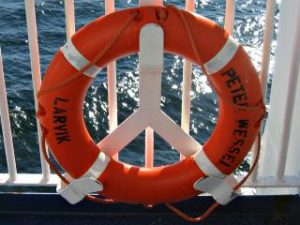PTSD Recovery: How To Begin Developing A Sense of Safety
PTSD recovery, how to begin? To me, the most powerful way to engage in your recovery starts with education. That's why tonight I'm offering a free webinar about "How Trauma Affects Your Brain" (sign up by clicking the link for more info and to receive the replay later).
For one full hour I'll offer the inside scoop on the brain changes you can expect (or probably already experience) after trauma and with PTSD, plus answer your personal questions. You can sign up for this PTSD webinar here.
In addition to brain changes, if you have symptoms of the new PTSD criteria you probably live in a world of fear, anxiety and the expectation of danger. How do you begin shifting the balance toward calm, confidence and control? Reclaiming a sense of safety can add terrific strength to your daily coping and overall approach to recovery.
FEELING SAFE IN AN UNSAFE WORLD
 Two pillars supporting all PTSD recovery are finding ways to reclaim a sense of safety and control. Today I want to focus on the idea of safety, which is defined as “the condition of being protected from danger, risk or injury.”
Two pillars supporting all PTSD recovery are finding ways to reclaim a sense of safety and control. Today I want to focus on the idea of safety, which is defined as “the condition of being protected from danger, risk or injury.”
When you think of safety what kinds of images and feelings occur to you? What makes you feel protected? Your responses can fall into one or both of two categories: internal versus external actions. For example, you feel you have the capability to effectively defend yourself. Or, you feel someone or something outside of you will be sure to keep you secure.
The effect of trauma on your brain can lead to an activation of the survival response that never ends. Neurologically, physiologically, biologically, psychologically and emotionally habits and responses have taken over. Your mind and body create fear by anticipating bad things happening and bad outcomes. The more those neural pathways fire the more strong they become until your mind and body actually create a feeling of danger that doesn’t accurately reflect the moment, situation or circumstance you’re in.
There Is A Way To Begin Reclaiming Control
Fear creates chaos. Safety comes from things you can depend on. When you redevelop your ideas about, recognition and experience of safety you counter the chaos with calm. How to do that in a day when you’re always feeling on edge? The same way you create any success in PTSD recovery: by identifying small opportunities, choices and actions that create oasis-like moments where your focus shifts from danger to safety. And not just a single quick experience but several lasting impressions that begin to build up.
STEP ONE: Start being aware of positive, supportive, protective things you can already depend on. I’ll make a quick list to jumpstart you:
- A compassionate friend
- An animal’s presence
- Beauty in nature
- A moment of stillness
- A schedule
- The love of a family member
- The sound of a song that always makes you feel good
- The taste of something that makes you happy
- The smell of something that makes you feel comfort
Now that you’re warmed up, take a moment to jot down things that make you feel safe that you can expect to happen in any day. Think about the people you know, the places you go and the things you experience.
STEP TWO: I’ve written previously about how you are sensitizing your amygdala, plus how you can help your brain change that habit (it’s a really easy process, click the link to check it out!). Using the steps for brain change, identify and then experience those things that you can depend on. Develop a habit that allows you to do this six times a day so that you balance out the chaos of fear and danger with moments that allow you to tap you into a sense of safety and well-being.
Bringing yourself out of survival mode and into life mode requires many changes, lots of diligent work, perseverance, guidance and support. Along the way there are practices you can develop that help train your brain to make the changes you desire. Giving your brain experiences that promote the ideas, beliefs, sensations and feelings you wish to have offers it a road map to creating and recreating them over and over.
How to begin developing a sense of safety can start as easily as implementing daily safety practices that allow you to create and notice a sense of well-being, plus holding it multiple times helps develop new neural pathways that become new habits that can help reduce stress and triggers and increase your calm, confidence and control – all of which adds up to effective progress in healing PTSD.
Michele is the author of Your Life After Trauma: Powerful Practices to Reclaim Your Identity. Connect with her on Google+, LinkedIn, Facebook, Twitter and her website, HealMyPTSD.com.
APA Reference
Rosenthal, M.
(2014, March 26). PTSD Recovery: How To Begin Developing A Sense of Safety, HealthyPlace. Retrieved
on 2025, December 29 from https://www.healthyplace.com/blogs/traumaptsdblog/2014/03/ptsd-recovery-how-to-begin-developing-a-sense-of-safety
Author: Michele Rosenthal
I am interested in the PTSD webinar. When I attempted to sign up for it, I noticed that it is not available. Are they still available? If they are, could you please email me information regarding the price?